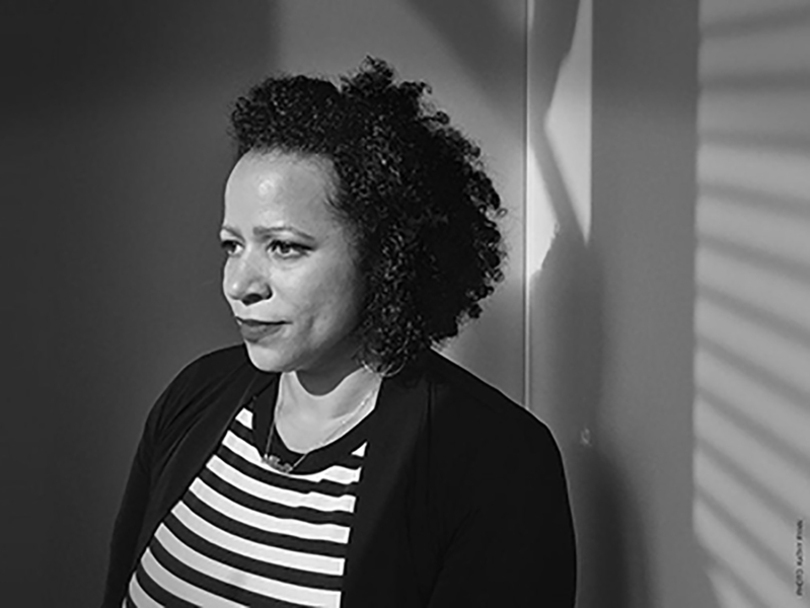New York Times Magazine writer discusses importance of education reporting at Syracuse University lecture

Courtesy of Syracuse University
Nikole Hannah-Jones, a staff writer for the New York Times Magazine, covers education and housing segregation across the country.
Nikole Hannah-Jones, a New York Times Magazine staff writer, gave an impassioned speech Thursday night at Syracuse University on why education reporting is important in historically segregated school districts.
Hannah-Jones spoke at the S.I. Newhouse School of Public Communications’ Joyce Hergenhan Auditorium on how reporters can confront racial divides in the United States, she said.
She said the legacy of segregation in education started in 1619, when the first African slaves were imported to the United States.
“This is not ancient history,” she said.
Hannah-Jones is a MacArthur Fellow and covers segregation, focusing on education and housing, a career she started in Durham, North Carolina. She said her work is always meticulously reported, intensely narrative and deeply historical.
She began the lecture by saying “this will not be an inspirational talk.”
“I’m writing about things people prefer not to believe, prefer not to see. I often like to say to people ‘show me the lie,’” Hannah-Jones said.
What people fail to realize about segregation, she said, is that “a lot of resources went into it.”
Hannah-Jones displayed statistics of reading test scores from the National Assessment of Educational Progress and cited them in saying that desegregation peaked in 1988, but the gap between the reading scores of black children compared to white children has been steadily widening since then.
The difference between segregation in the South and the North, she said, is that in the South, there were specifically written laws that upheld racial discrimination. The North, on the other hand, was “savvier,” she said, meaning that minority groups were relegated to ghettos in cities, including places such as Chicago or Syracuse.
Because of this, she said, during her time as an education reporter, she’s seen numerous reform programs come and go without making a discernible difference.
“Why couldn’t we fix it, and what has actually worked?” she said. “There was only one thing that worked: integration. When black kids sit with white kids, they get the same thing white kids get … when we ignore the one reform that works, we have to confront the why.”
Integration was a recurring theme throughout Hannah-Jones’ lecture. The reporter said she does not like using the word “diversity,” because it’s become a buzzword for schools to sidestep the real reforms they need to enact.
Hannah-Jones added that segregated schools offer fewer Advanced Placement and college prep programs, less rigorous instruction and receive less funding.
School segregation occurs across districts, she said, not within them. Meaning, Hannah-Jones said, it’s more likely that an entire school district is segregated rather than a single school in a district.
Statistics, compiled in a report published by EdBuild, show that Syracuse has one of the most segregated school district borders in the state.
Ending the lecture, Hannah-Jones answered audience questions. One student asked what motivates her.
“Rage,” she replied. “When you look at students who know how little we value them, that is what drives me.”




